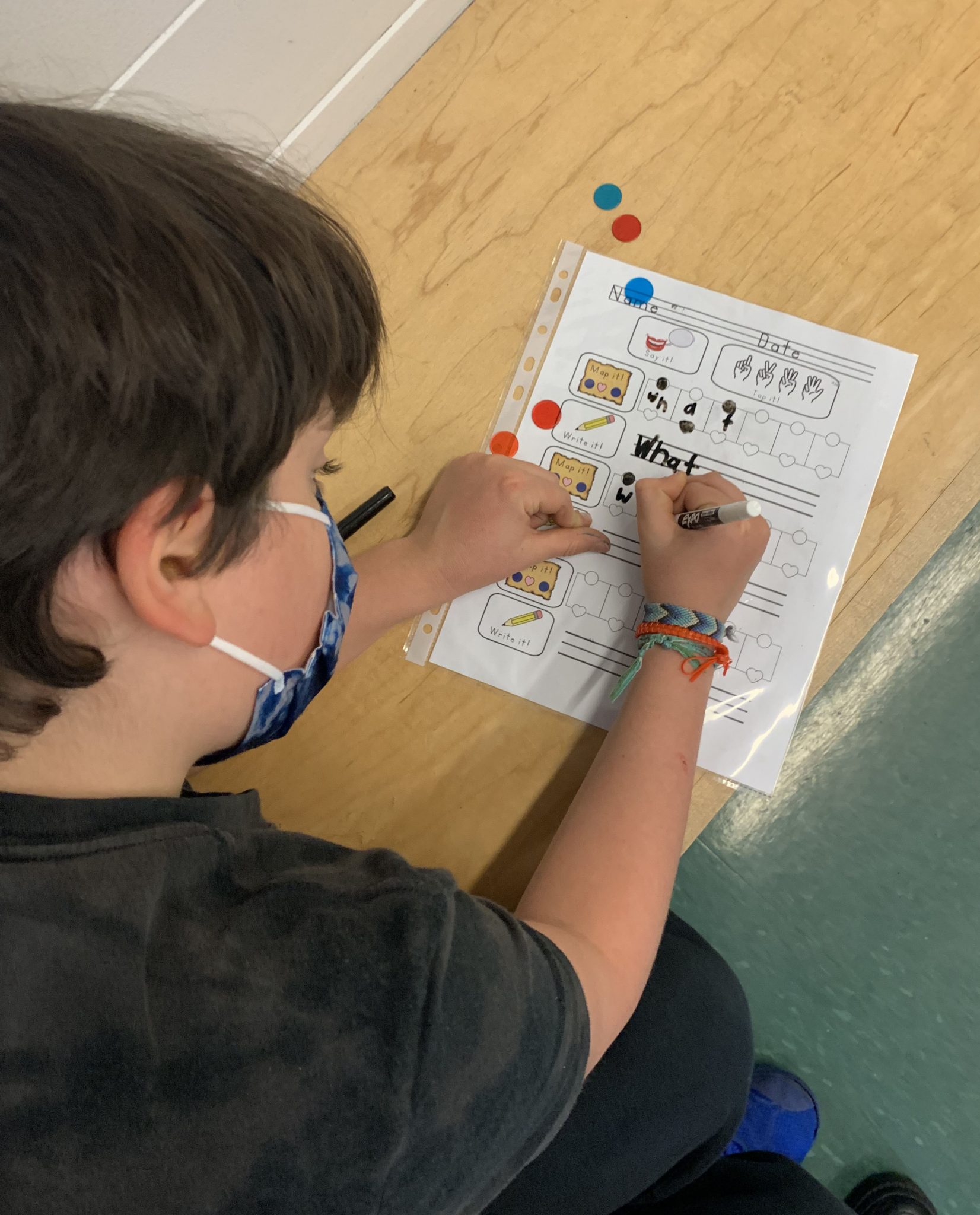 Gaynor’s Reading Department is taking a new approach to teaching high frequency/sight words based on Orton-Gillingham instruction.
Gaynor’s Reading Department is taking a new approach to teaching high frequency/sight words based on Orton-Gillingham instruction.
The Orton-Gillingham Approach (OG) is a direct, explicit, multisensory, structured, sequential, diagnostic, and prescriptive way to teach literacy when reading, writing, and spelling does not come easily to individuals, such as those with dyslexia. Gaynor’s reading curriculum is based on the OG approach and individualized to meet each student’s needs. Gaynor’s Orton-Gillingham Instructional Program has been officially accredited by the Academy of Orton- Gillingham Practitioners and Educators.
Based on this instruction, Lower Division students are now using orthographic mapping to help them master high frequency/sight words such as “said,” “can,” and “was.” Orthographic mapping involves the formation of letter-sound connections to bind the spellings, pronunciations, and meanings of specific words in memory.
Reading Chair Sloan Shapiro said orthographic mapping fits in well with the work they have already been doing, because it capitalizes on the letter-sound correspondence students have been building on a daily basis.
“It’s the idea that all words should be sight words, because you should be able to recognize them immediately,” said Ms. Shapiro. “Good readers and spellers can recognize a word immediately.” 
In the new approach, words are divided into two categories: those that follow one of the six syllable types and can be sounded out, and those with irregular spellings. High frequency words that are spelled regularly and can be sounded out are called “Flash Words,” because they are used often and students need to be able to read and spell them “in a flash.” Irregularly spelled words are called “Heart Words,” because some part of the word will need to be learned “by heart.”
Ms. Shapiro said students are having a great time sorting words into those parts they have to know “by heart,” which they put a heart around, and those they can know “in a flash,” since they know all of the sounds.
“Previously we talked about the two types as red words and green words,” she said. “Green words are phonetically correct, and red words are the ones you can’t sound out. It didn’t really stick as much in the past, but the idea of the heart words and the flash words really resonates and makes it a little more concrete to them. Now students are requesting words they want to map out.”
